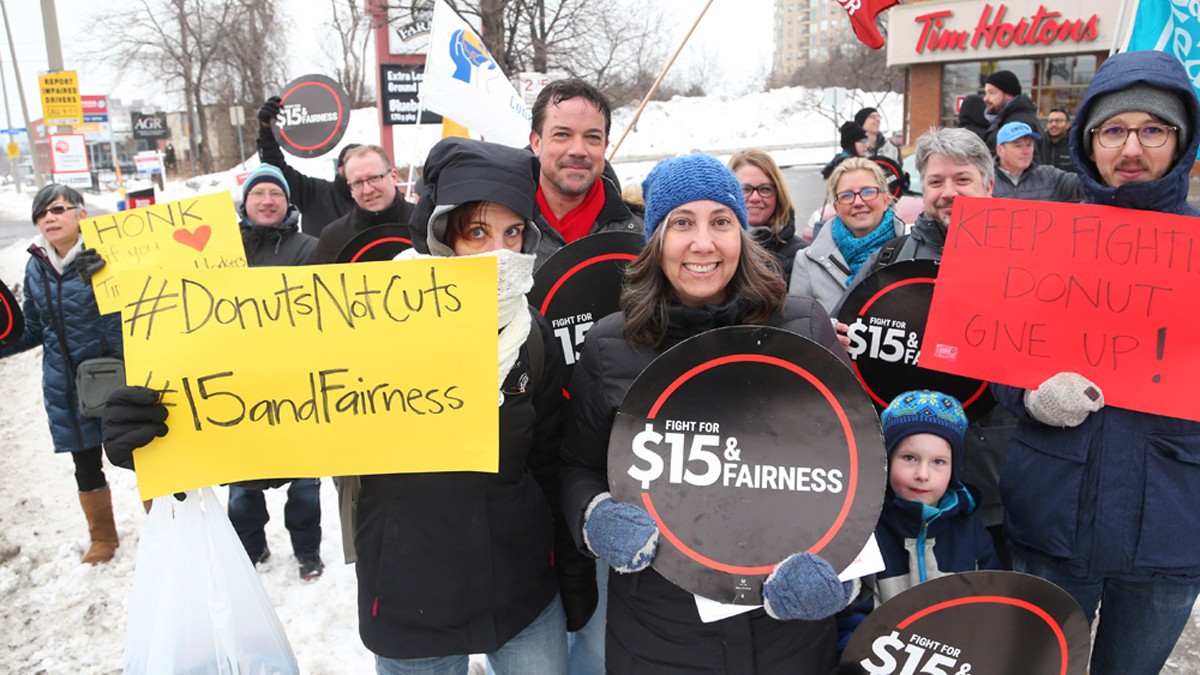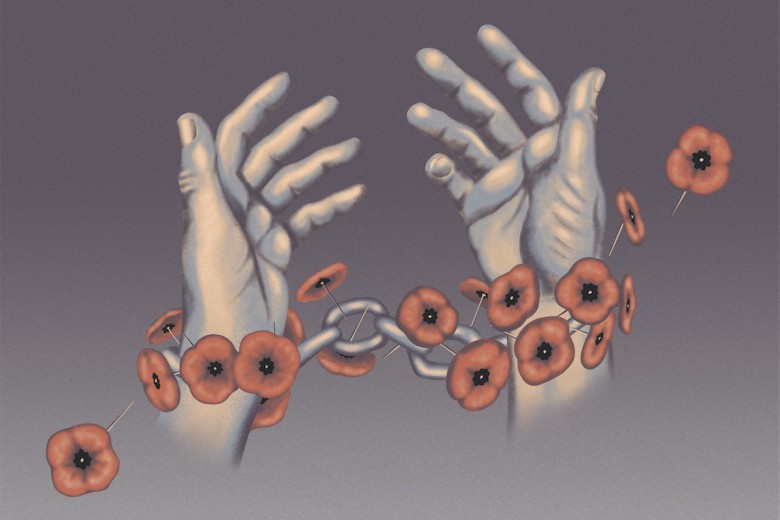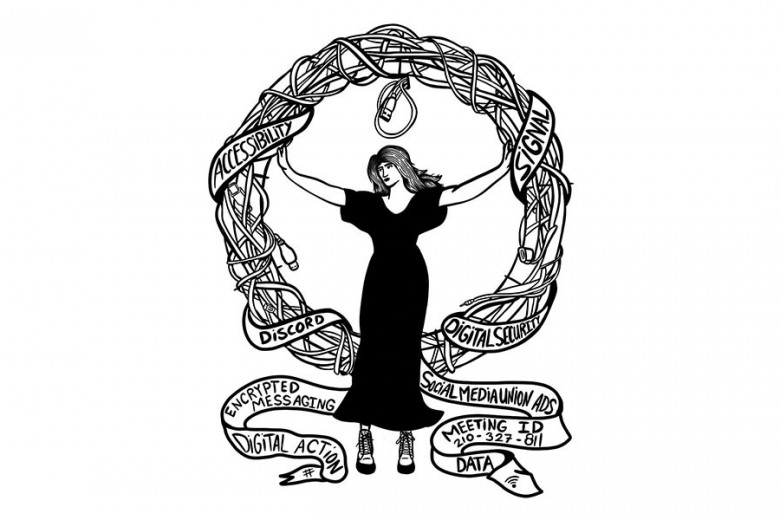On the first day of 2018, the owners of two Tim Hortons locations in Cobourg, Ontario, retaliated against the province’s minimum wage increase and took away employees’ paid breaks and some benefits.
These aren’t just any old Tim’s franchisees, either. They are Ron Joyce, Jr. and Jeri Horton-Joyce, wealthy children of the founders of the Canadian coffee-and-doughnut institution who issued their decree from their winter home in Florida. Ron and Jeri’s “let them eat doughnuts” moment, self-righteously arrogant and reeking of entitlement, can be described as a salvo in a class war in Ontario.
In response, Premier Kathleen Wynne called the owners “bullies,” apparently throwing in her lot with the low-wage workers. The hashtag #BoycottTimHortons immediately started trending, and some labour councils planned pickets of offending franchises. Seemingly everyone was talking about it: on my flight home to Regina from Toronto that week, I overheard a dad say to his child, “And then the premier told the bullies to pick a fight with someone their own size!”
In turn, employers closed ranks to fight for their right to profit from the poverty wages of workers. The Sunset Grill chain increased employees’ tip-out deduction, and workers worry that management is pocketing the cash. Workers at Wimpy’s, East Side Mario’s, and Rainbow Foods reported similar backlash. News outlets like the Toronto Star, the CBC, and the National Post published inflammatory headlines claiming that 60,000 jobs would be lost, when in fact the Bank of Canada’s figure of 60,000 refers to the slowdown in national job creation. As economists like Michal Rozworski have shown, the Bank of Canada’s conclusion was that the wage increase was a net positive for workers. That was conveniently left out of much reporting. Pointing to retaliatory job and benefit cuts, the CBC asked, “is a higher minimum wage the best way to help low-income workers?” This kind of analysis does more to conceal than reveal the truth: workers are struggling daily to get by on poverty wages.
Economic justice is won because militant, strategic, worker-driven movements force it.
Despite this antagonistic climate, the $15 campaign secured a huge victory. The most important thing we can learn from it is that economic justice is won not because political parties bestow it, but because militant, strategic, worker-driven movements force it. The Ontario NDP (ONDP) are imagined by many to be an ally of the working class, but they refused to support a $14 minimum wage when it came up in 2014, instead calling for $12. In this recent furor, ONDP critic of labour, fairness, and work, Cindy Forster, suggested that Tim Hortons’ employers should “wait and see” how the increased labour costs would affect their business before they cut benefits and breaks. The half-hearted admonition conspicuously left benefit and break cuts on the table as an employer’s consolation prize. As for the Liberals, just two months before Wynne stood up to the Tim Hortons scions, she was busy ramming through vicious strikebreaking legislation against Ontario college faculty. These parties do not fight for workers unless workers force them to.
The minimum-wage increase, now a reality in Ontario and Alberta, is a profound and powerful symbol of economic justice, class consciousness, and class struggle. In 2015, 23 per cent of Canadian workers earned $15 per hour or less. In the era of precarious work, the gig economy, the housing affordability crisis, and growing income stratification, people are starting to call foul on CEOs’ claims that the economy can’t afford a decent wage. This movement and the public outcry of support are clear evidence that precarious and non-unionized workers are organizing as a class. They are speaking the language of economic justice and people are listening: according to one poll, 63 per cent of Canadians support a national minimum wage of $15 an hour. This is a tremendous opportunity to learn from the Fight for $15, develop new forms of organizing, and engage in direct worker actions to start taking the fight to employers and demanding a decent life.
The Fight for $15 in Ontario is a lesson in hope and action. It reminds us that tangible victories are possible and that organizing as a class gets the goods. It shows that when employers go on the attack or cry wolf about economic crises, workers need not back down. By fighting back and demanding a living wage, the connections between workers and their broader communities will continue to grow as workers come to understand themselves as a powerful class instead of the victims of the new economy. The success of this campaign in Ontario shows the Fight for $15 can win – not just by raising the minimum wage, but by building a new fighting movement and some hope for the future.







